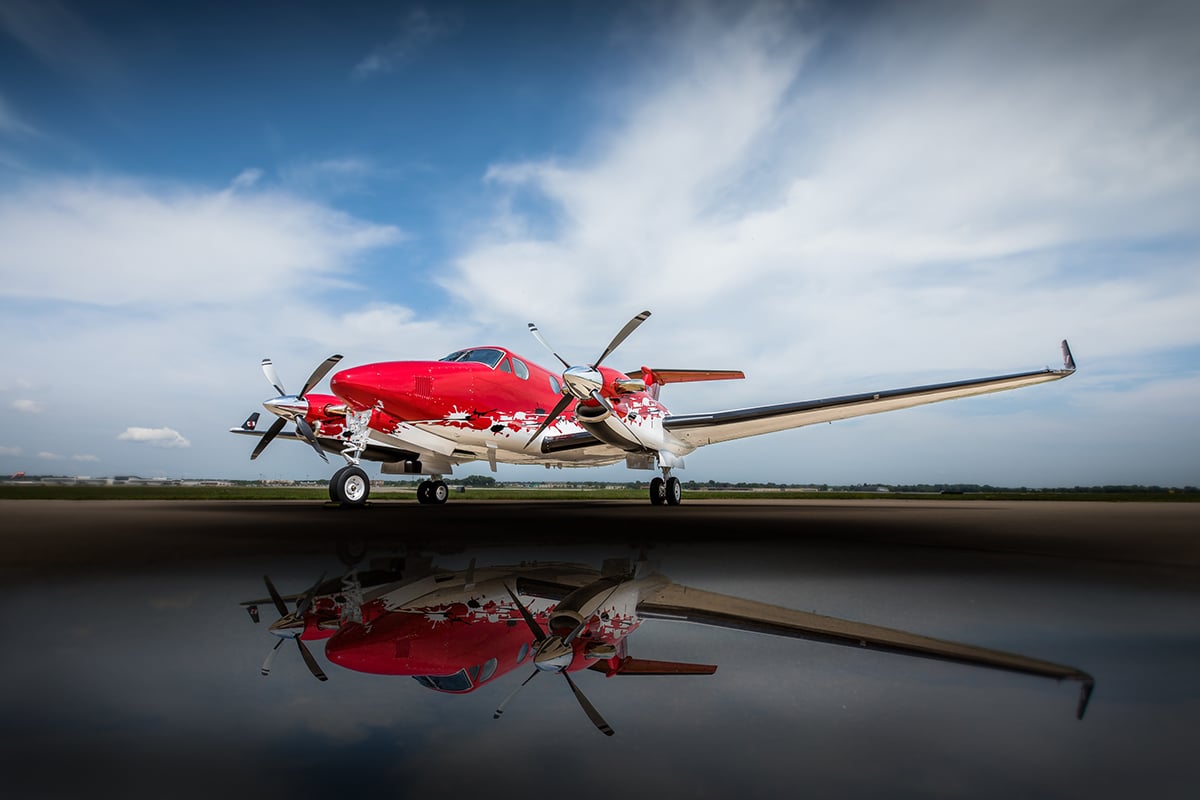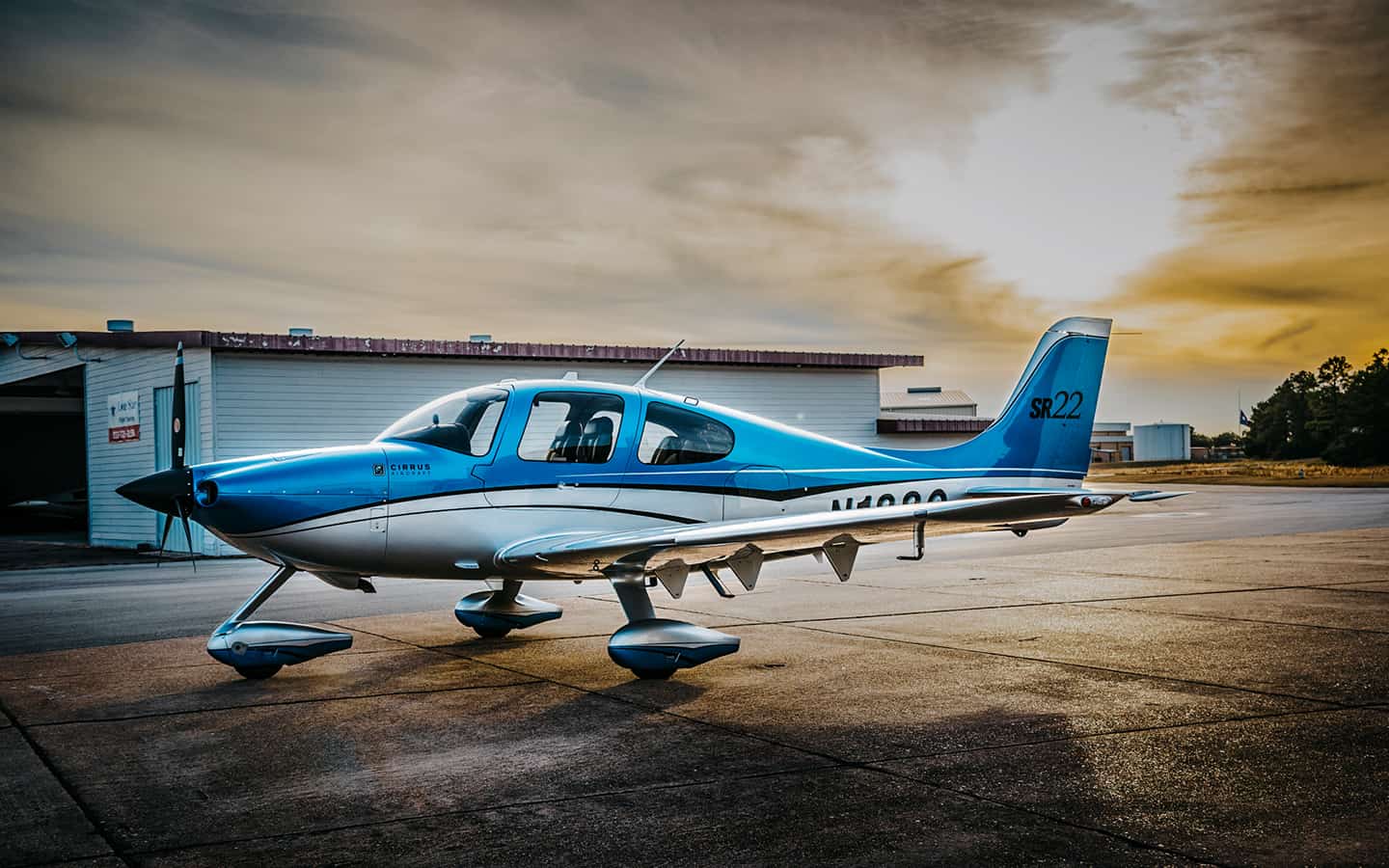Aircraft Paint - Airplanes often have brightly colored logos and designs on the exterior. If you're wondering how they got there, it's a lot easier than you think. With minor differences, painting an airplane is similar to painting any other object, such as a house or wooden furniture. A little special knowledge is required to make it work.
Vessels are usually painted every seven to ten years and as you might suspect, the old paint must be removed before the new paint can be applied. After removing the old color, a primer is applied, then the paint itself. The process of painting an airplane can take anywhere from a few days to a few weeks. Depending on the type of paint you use, you may also need a base coat and/or a clear coat.
Aircraft Paint
Removing the old paint from the aircraft is an important part of the process, as painting over the existing paint can add weight to the aircraft, which no pilot wants. Basically, three coats are used to paint an aircraft: primer, base coat and top coat, the latter gives the aircraft a shiny look.
Aviation Painting Services
Many aircraft are painted with a very thin layer of low pressure, high volume spray paint. After all, painting an airplane with a regular brush would be very time-consuming and expensive. After removing the old paint, a primer is applied, then the paint itself. The paint is usually polyurethane paint.
There are two main methods of removing paint from an aircraft. The first is sanding the paint, but this is usually a time-consuming process, and if done incorrectly can also damage the surface of the aircraft. Another method is to soak the plane with a solvent and naturally dissolve the existing paint. He gets it in 24 hours.
Thin coats are essential when painting an airplane because they use less paint, ultimately making the airplane lighter, because all layers of paint add weight to an airplane. Most paints are chrome-free and easy to clean. Sometimes it is necessary to lubricate using plain soap and water.
There are two main types of paint used on aircraft, enamel and epoxy. Here are the main differences:
Heritage Paint Project: Celebrating 100 Years Of Naval Flight
These two paints can be used together. For example, an enamel paint is often used for the design and color of the aircraft. Epoxy or polyurethane is then applied to add strength and shine. It is the perfect combination of toughness and beauty.
When car companies repaint automobiles, they cover parts of the vehicle with a thick paper-like material to prevent accidental repainting of areas such as headlights, windows, etc. The same is done with airplanes. If you've ever wanted to see a video of a painted airplane, you can find it on YouTube. How the process is carried out is quite interesting, and you will be surprised by how it paints a vehicle or other object.
Of course, airlines also hire experts to perform paint jobs, so they have the right clothing and equipment and know the exact steps to take to make the paint job look great at the end. . This is why no one is allowed to paint a plane!

One of the most interesting aspects of painting an airplane is that it uses a spray paint instead of the normal paint that is applied with a brush or roller. High volume, low pressure, or HVLP equipment used in aircraft painting is specifically designed for painting jobs. They provide very even and thin layers of paint that look good and are not too heavy afterwards.
How And Why Are Airplanes Painted? (step By Step)
Also remember that only FAA certified mechanics are allowed to inspect the aircraft. If you want to make sure everything is done correctly, there are some FAR sections, as well as local and state regulations, that you should be aware of before painting your airplane.
At this point you may be wondering why airplanes are painted in the first place. After all, large metal containers can be quite attractive even without a paint job. The answer makes a lot of sense. Aircraft are painted when they are brand new because the paint protects the metal from salt, oxidation and fuel spills that can damage the metal.
Of course, after a paint job, the paint itself can develop cracks and chips, which tend to collect moisture and dirt and therefore develop areas of corrosion. This is why it is so important to repaint every 7-10 years. Also, the area between the plane's metal and paint can corrode and cause things like insect corrosion, but regular paint jobs can prevent this from happening.
Because of all these things, it's a smart idea to paint an airplane and periodically touch it up with a new paint job for a number of reasons. Paint is important, and not just for the exterior of an airplane. Paint has many functions, including protecting aircraft from corrosion and extending their life. In the future, it will also improve environmental performance.
Envision Aviation Has A Vision For Aircraft Paint Schemes
Monica Weiner has been working as a science journalist since 1985. With a degree in Geology, he is particularly interested in research and new technological developments and their impact on society.
Aircraft manufacturers are keen to reduce weight wherever possible. There are good reasons for this fight for every gram: the lighter the plane, the less fuel it consumes, the more passengers it can carry and the better its carbon footprint. As a result, engine manufacturers are constantly optimizing their designs: fuselage parts are being made from expensive carbon fiber-reinforced plastics; For interior design, solid metals are being replaced by fiber-reinforced composites. And then the painters come and throw a ton of paint on the Airbus A380. Is it really necessary?
"Absolutely," explains Mike Timm, Lufthansa Technik's production manager for aircraft paint services. "Without a protective layer of paint, aircraft parts will deteriorate very quickly - whether they're metal or plastic, it doesn't matter." During daily flight service, the surfaces are subjected to high stress: ice crystals, dust particles, ash and grains of sand are thrown into the material at a speed of 1000 km/h. In addition, there is UV radiation and temperature changes from -55 to +100 degrees Celsius. If the surfaces are not sealed, deicing agents, kerosene and lubricating oil residues rapidly corrode metals and destroy fiber-reinforced plastic composites. For cost reasons, the first passenger plane took off without color—there was a war in Europe. But aluminum alloys soon rusted and had to be polished frequently. Today, not a single Junkers Ju 52 flies without a protective layer of paint, even if it is not obvious at first glance. The outer shell has a layer of metallic paint.

Without paint, nothing works on the plane. However, the paint cans you find at the home improvement center don't have to be filled: aircraft paint needs to be very thin, scratch-free, stain-resistant, and environmentally friendly. Summarizing the situation, Tim says: “Thanks to the new development, we can now operate very economically. Almost a ton of paint seems like a lot for an Airbus A380, but it's spread over an area of about 4,000 square meters. The four or five layers of paint that must be applied have a combined thickness of one millimeter.
Omg! Look At This Airplane!
D-AIRX, Lufthansa technician working on a window band on an Airbus A321-131 painted in the early 1950s to celebrate 50 years of Lufthansa in 2013, Lufthansa technician Perfect fit.
Decades of experience are embedded within these system layers. In the simplest case, two components must be separated: painters first apply an anti-corrosion primer to clean, sanded surfaces; The paint can then be poured over the printer. At this stage, single-layer and two-layer systems are also available. Paint manufacturer AkzoNobel has developed a two-layer system consisting of a base coat and a clear coat. "The base coat/clear coat system has a number of advantages," explains Thomas Boettcher, director of aircraft paint sales at AkzoNobel Aerospace Coatings. "The clear coat protects against UV radiation and increases gloss and paint retention. In addition, the surfaces are so smooth that the aircraft does not suffer from dirt and requires an average of no more than half the cleaning. And, lasting six to eight years, two-coat paints they last significantly longer than most other paint systems, averaging just five years.
"Without a protective layer of paint, aircraft parts will deteriorate very quickly - whether they're metal or plastic, it doesn't matter."
Other intermediate layers allow the integration of additional functions, such as selective paint removal. This function has been created
Customize Your Aircraft's Paint Scheme
Aircraft paint booth, best aircraft paint, aircraft paint manufacturers, aircraft paint facilities, custom aircraft paint, best aircraft paint shops, aircraft paint design, aircraft touch up paint, aircraft paint services, aircraft paint colors, aircraft paint shops, polyurethane aircraft paint
0 Comments